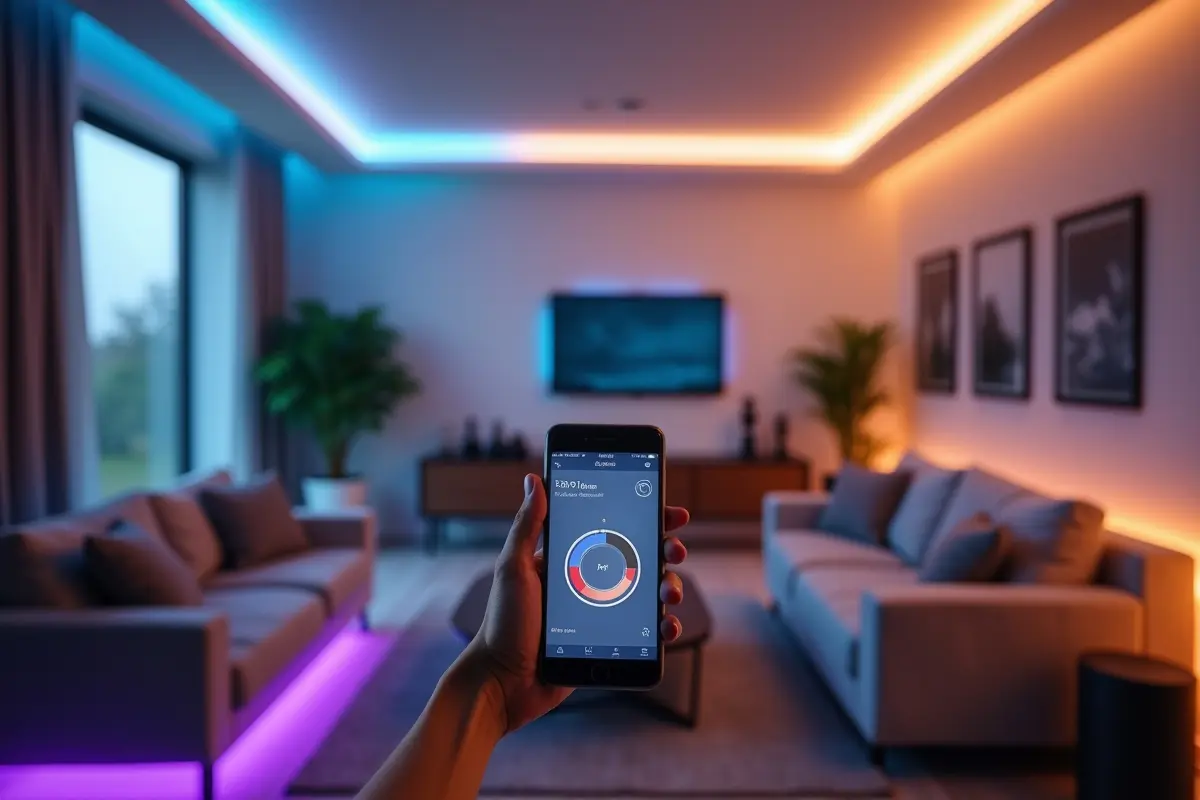Smart Lighting Trends for Modern Homes
Homeowners favor smart lighting for convenience, energy efficiency, and style, transforming living spaces and enhancing well-being through automation and interconnected devices. Consulting a qualified contractor ensures seamless integration and optimal performance. Prioritizing features and planning for scalability help create a modern, functional home. For large projects, hiring skilled electricians guarantees safety and reliable systems.
Voice-Controlled Lighting
Voice-controlled lighting remains a leading trend, allowing users to adjust brightness, color, and preset patterns through platforms. The hands-free convenience offered by voice integration is invaluable for people with mobility challenges and busy households alike. Partnering with a skilled lighting contractor ensures proper installation and compatibility with existing smart systems, maximizing both functionality and efficiency.
Not only does this technology create a seamless user experience, but it also paves the way for a truly connected home where various smart devices interact effortlessly. With each technological advancement, voice recognition systems become increasingly accurate and versatile, supporting more advanced controls such as color tuning and scheduling through simple commands.
Circadian Rhythm Lighting
Lighting that adapts to our circadian rhythms is gaining prominence as more research links exposure to artificial light with adverse effects on sleep and health outcomes. Circadian lighting systems shift color temperatures throughout the day, simulating sunrise and sunset.
Morning hues boost alertness and productivity, while warmer evening tones promote relaxation and prepare the body for restorative sleep. This technology not only encourages healthier routines but also makes homes feel more attuned to natural light cycles, creating a comforting and dynamic atmosphere.
Energy-Efficient LED Solutions
One of the foundational changes in smart lighting is the adoption of energy-efficient LEDs. These bulbs use a fraction of the energy consumed by traditional incandescent lighting and last significantly longer. Many smart LED systems include sensors that detect when a room is vacant or sense available daylight, automatically reducing energy waste and utility expenses.
As sustainability becomes a primary concern, these intelligent LEDs help homeowners lower their carbon footprint while enjoying reliable, customizable illumination. Some advanced systems even provide energy analytics, enabling users to track usage patterns and adjust their habits for maximum savings.
Integrated Smart Home Systems
Integration is key for modern homes. Smart lighting is being increasingly integrated into broader home automation networks, enabling homeowners to control their lighting alongside climate, security, and entertainment systems through a single app or voice interface.
Working with the best Fort Mill electricians can help ensure these systems are installed safely and optimized for performance. Creating automated scenes, such as a “movie night” or “dinnertime” mode, blends lighting with other atmospheres for maximum comfort and immersion.
Comprehensive integration not only enhances convenience but also future-proofs homes by paving the way for new devices and features as technology advances. Full-home integration solutions, such as those offered by SmartThings or Control4, are now popular choices among tech-savvy homeowners and renovators.
Minimalist and Artistic Fixtures
Today’s smart lighting isn’t just about practicality—it’s a design statement. Minimalist fixtures that blend seamlessly with contemporary interiors remain highly sought after, creating uncluttered and harmonious living spaces.
Meanwhile, artistic and sculptural lighting fixtures double as works of art, turning functional lights into mesmerizing focal points. These bold design choices make lighting a conversation piece while still packing all the features and flexibility expected in a smart home. From geometric pendant lamps to subtle wall panels, homeowners have an array of stylish options to enhance any room’s ambiance.
Adaptive Lighting for Health and Wellness
Adaptive smart lighting systems go beyond convenience, directly contributing to residents’ health and wellness. Features such as anti-glare technology, blue light filtering, and daylight simulation help reduce eye strain, improve focus, and support a balanced mood. In home offices and learning spaces, these settings provide an environment that nurtures productivity and comfort.
In living spaces, adaptive solutions gently transition lighting throughout the day to foster relaxation and better sleep cycles, which is particularly beneficial for families and individuals working from home or spending extended hours indoors.
AI-Driven Lighting Schedules
Artificial intelligence is transforming the way lighting is programmed and managed daily. AI-powered smart lighting can learn your habits—when you wake up, leave the house, or wind down for the night—then adjust schedules and settings automatically.
These systems ensure you always have the ideal lighting without manual input, while also conserving energy by reducing unnecessary use. As AI technology matures, homeowners can expect even smarter, more intuitive systems that optimize comfort, ambiance, and savings without constant supervision.
Conclusion
Smart lighting stands at the intersection of technology, wellbeing, and design in modern homes. By adopting trends such as voice control, circadian settings, energy-efficient LEDs, and AI automation, homeowners are creating highly personalized and functional living spaces that match their lifestyle.
Embracing these advances not only improves daily comfort and convenience but also contributes to a healthier, more sustainable home environment. To maximize the benefits of these innovations, partnering with experienced contractors and electricians is a prudent step towards a brighter, smarter future.

